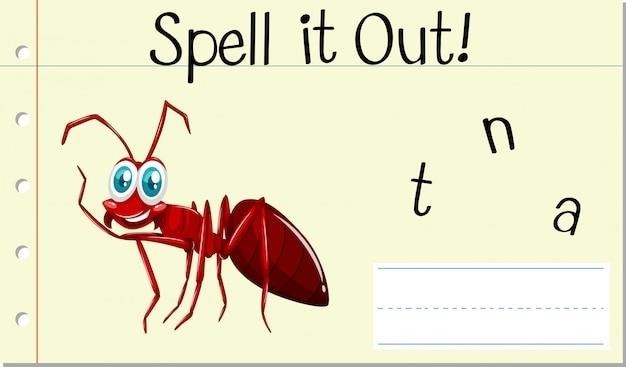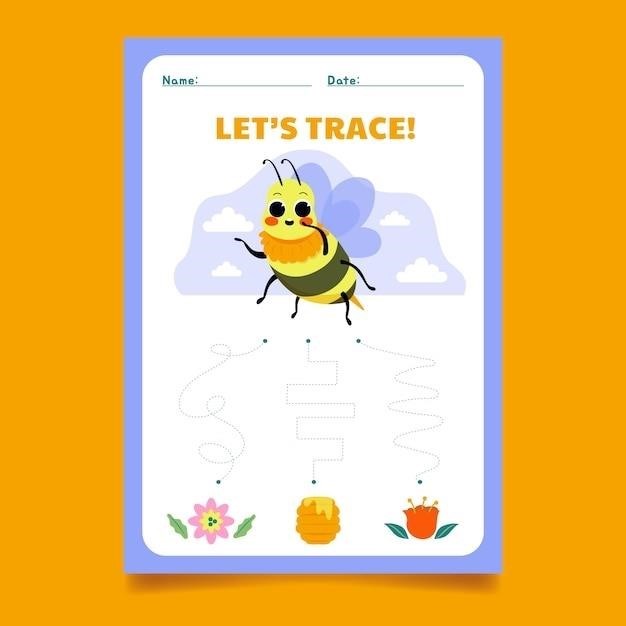Hey, Little Ant Book PDF⁚ A Comprehensive Overview
This overview explores the availability, variations, and educational applications of the “Hey, Little Ant” picture book, a rhyming dialogue between a boy and an ant, prompting discussions on compassion and empathy.
Availability and Access
Finding the “Hey, Little Ant” book in PDF format requires exploring various online resources. While not readily available as a free, official PDF download from the publisher, several websites offer user-uploaded versions. These may be of varying quality and legality. Searching online bookstores or libraries’ digital archives might provide access to a digital version, though not necessarily a downloadable PDF. Checking used book websites could also yield results, though these would be physical copies, not PDFs. Remember to respect copyright laws when accessing any online materials.
Online Resources and Downloads
Locating a downloadable PDF of “Hey, Little Ant” can prove challenging. While the publisher’s website may not directly offer a PDF version, various online platforms like Scribd or Internet Archive might host user-uploaded copies; However, the quality and legality of these uploads can vary. Be cautious and ensure you’re accessing the book through reputable channels, respecting copyright laws. Some educational websites might offer lesson plans or activities related to the book, potentially including excerpts, but a complete PDF download is less common. Thorough online searches using specific keywords might reveal additional resources.
Variations and Editions
While the core text of “Hey, Little Ant” remains consistent, minor variations might exist across different printings or editions. These could include subtle differences in illustrations, page layout, or even the inclusion of additional introductory material. The original version, published by Tricycle Press, serves as the benchmark. However, translations into other languages might also exist, leading to potential variations in wording or phrasing to suit the target audience. It’s important to note that these variations generally don’t affect the overarching narrative or message of the story, focusing instead on minor aesthetic or linguistic adjustments. Always check the publishing information to identify the specific edition you are engaging with.

Exploring the Story’s Content
This section delves into the narrative arc, character interactions, and underlying themes within the “Hey, Little Ant” children’s book.
The Narrative and Dialogue
The narrative unfolds as a rhyming dialogue between a boy contemplating squishing an ant and the ant itself. The boy, initially considering the ant as insignificant, presents his reasons for wanting to squash it. The ant, however, cleverly counters with arguments emphasizing its own importance and right to life. This back-and-forth exchange forms the core of the story, creating a compelling tension that engages young readers. The simple yet effective language and rhythmic structure enhance the story’s memorability and appeal, making it suitable for both reading aloud and independent reading. The conversational style of the dialogue fosters a sense of immediacy and allows the reader to connect easily with both characters. The story’s power lies in its ability to present contrasting viewpoints without judgment, encouraging children to consider different perspectives and make their own ethical judgments.
Themes of Compassion and Empathy
Central to “Hey, Little Ant” is the exploration of compassion and empathy. The book doesn’t explicitly tell children what to do; instead, it encourages them to consider the ant’s perspective. By highlighting the ant’s feelings and experiences, the story cultivates empathy in young readers, prompting them to understand the importance of considering others’ viewpoints. The book subtly challenges the common attitude of dismissing smaller creatures as insignificant. The ant’s articulate defense of its life forces the reader to question their own assumptions and biases. This subtle approach effectively teaches children about the value of all living things and promotes a more compassionate worldview. The story’s open ending, leaving the decision to the reader, further emphasizes the importance of individual moral reasoning and ethical consideration.
Moral and Ethical Considerations
“Hey, Little Ant” prompts significant moral and ethical reflection. The narrative presents a clear ethical dilemma⁚ should the boy squish the ant or show compassion? The book avoids a simplistic resolution, leaving the decision to the reader, fostering critical thinking about the consequences of actions. It encourages children to consider the inherent value of all life, regardless of size or perceived importance. The story challenges the natural inclination to prioritize one’s own desires over the well-being of others, promoting a deeper understanding of empathy and respect for all living creatures. This lack of a definitive answer sparks classroom discussions on ethical behavior and encourages children to develop their own moral compasses. The book acts as a springboard for exploring complex ethical questions appropriate for young minds.
Educational Applications
“Hey, Little Ant” offers rich opportunities for classroom discussions on empathy, ethics, and creative writing, inspiring children to explore diverse perspectives and develop their own moral reasoning.
Classroom Activities and Lesson Plans
Numerous lesson plans utilize “Hey, Little Ant” to foster critical thinking. Activities include role-playing the boy and ant’s dialogue, encouraging students to analyze their perspectives and motivations. Creative writing prompts can explore alternative scenarios or endings, developing empathy and understanding of different viewpoints. Discussions about the book’s themes of compassion and the ethical treatment of other living beings are central to lesson plans. Students can create artwork depicting the story or write poems from the ant’s perspective; The book’s simple language and relatable characters make it accessible for various age groups, allowing teachers to adapt activities to suit different learning levels and needs. These interactive approaches transform the reading experience into a dynamic learning opportunity.
Teaching Resources and Materials
Beyond the book itself, numerous supplemental resources enhance classroom use of “Hey, Little Ant.” Many websites offer printable worksheets and activities focusing on vocabulary, comprehension, and creative writing. These resources often include graphic organizers to help students analyze character traits, plot, and themes. Some sites provide lesson plans with detailed instructions and adaptable activities for different grade levels. PowerPoint presentations or digital slideshows are available for interactive storytelling. These materials cater to diverse learning styles, offering visual aids, writing prompts, and discussion starters. Teachers can also create their own resources based on the book’s themes, tailoring activities to specific curriculum requirements and student needs, ensuring a rich and engaging learning experience.
Curriculum Integration and Alignment
The “Hey, Little Ant” book seamlessly integrates into various curriculum areas. Its focus on empathy and ethical decision-making aligns perfectly with social-emotional learning objectives, fostering discussions about kindness and respect for all living things. The rhyming text enhances language arts lessons, supporting vocabulary development, reading comprehension, and creative writing. The story’s simple yet thought-provoking narrative can spark discussions on character perspectives and moral dilemmas, fitting into ethics and character education programs. Furthermore, the book’s themes of conflict resolution and peaceful interactions can be integrated into conflict-resolution curricula. Its adaptability allows for cross-curricular connections, enriching lessons across subjects and promoting holistic student development. The book’s accessibility makes it suitable for various grade levels.
Author and Illustrator Information
Phillip and Hannah Hoose authored the heartwarming tale, with Debbie Tilley’s illustrations bringing the ant and boy’s story to life. Their collaborative effort created a beloved children’s classic.
Phillip and Hannah Hoose⁚ The Creative Team
The collaborative spirit behind “Hey, Little Ant” shines through the book’s unique blend of impactful storytelling and lyrical verse. Phillip Hoose, a renowned author of children’s literature, brought his extensive experience to crafting the narrative’s engaging dialogue and thought-provoking themes. His daughter, Hannah Hoose, a key contributor to the initial song version of the story, further enriched the text with her youthful perspective and understanding of childhood experiences. Their combined talents seamlessly weave together the playful banter between the boy and the ant, creating a captivating narrative that resonates with young readers. The resulting story’s simplicity and depth make it a valuable tool for exploring themes of empathy, compassion, and ethical decision-making, leaving a lasting impression on both children and educators.
Debbie Tilley⁚ The Visual Artist
Debbie Tilley’s illustrations for “Hey, Little Ant” are integral to the book’s success, transforming the rhyming dialogue into a visually engaging experience for young readers. Her artwork masterfully captures the emotions and perspectives of both the boy and the ant, using expressive lines and vibrant colors to convey the story’s central themes. Tilley’s style effectively portrays the contrasting sizes and perspectives of the characters, emphasizing the power dynamics at play while maintaining a lighthearted tone. The detailed depiction of the ant’s world adds depth and realism, inviting children to connect with the tiny creature’s plight. Her illustrations are not merely decorative; they actively participate in the storytelling, enhancing the emotional impact and leaving a lasting visual impression on the reader. The combination of text and illustration creates a cohesive and memorable reading experience.
Publication History and Background
Initially conceived as a song in 1992 by Phillip Hoose and his daughter Hannah, “Hey, Little Ant” later blossomed into a celebrated picture book. The collaborative effort between father and daughter showcases a unique origin story. Six years after its inception as a song, the lyrical narrative found its visual counterpart through Debbie Tilley’s illustrations. Published by Tricycle Press, the book quickly gained recognition for its engaging rhyme scheme and thought-provoking themes. Its enduring popularity speaks to its capacity to resonate with young readers and educators alike, prompting conversations about empathy and ethical considerations towards other living beings. The book’s journey from song to published work highlights a creative process fueled by family collaboration and a shared passion for storytelling.

Reviews and Critical Reception
Reader and educational reviews praise “Hey, Little Ant” for its impactful message of compassion and engaging storytelling, influencing children’s literature positively.
Reader Feedback and Testimonials
Online reviews showcase enthusiastic reader feedback for “Hey, Little Ant.” Parents appreciate its simple yet profound message about empathy and kindness, sparking important conversations with their children. Many describe the book as a favorite read-aloud, highlighting its catchy rhyme and engaging illustrations. Testimonials frequently mention the book’s ability to foster compassion and encourage children to consider the perspectives of others, even creatures as small as ants. The book’s success is evident in its continued popularity and widespread use in classrooms and homes, making it a treasured resource for promoting ethical consideration in young readers. Positive comments emphasize the book’s lasting impact and its ability to inspire discussions about empathy and respect for all living things. The simple yet powerful message resonates deeply with children and adults alike.
Educational Reviews and Assessments
Educational assessments of “Hey, Little Ant” consistently praise its value as a teaching tool. Reviewers highlight its effectiveness in fostering discussions about empathy, perspective-taking, and ethical decision-making. The book’s simple text and engaging illustrations make it accessible to young children, while its thought-provoking themes challenge them to consider the consequences of their actions. Many educators utilize the book to teach point of view, opinion writing, and comprehension skills. Curriculum integration suggestions are readily available, aligning the book’s themes with various learning objectives. The book’s ability to spark meaningful conversations and critical thinking makes it a valuable asset in early childhood education. Its impact on developing social-emotional learning is also frequently noted in positive reviews, making it a recommended resource for educators seeking engaging and impactful materials.
Impact and Influence on Children’s Literature
While not a groundbreaking work in terms of narrative structure, “Hey, Little Ant” has significantly impacted children’s literature through its focus on fostering empathy and promoting ethical considerations in young readers. Its simple yet powerful message about considering the perspectives of others has resonated with educators and parents alike. The book’s success has solidified its place as a valuable resource in classrooms and homes worldwide, influencing the creation of similar works that tackle complex themes in an age-appropriate manner. Its impact lies not in revolutionizing storytelling but in its consistent and effective promotion of crucial social-emotional learning skills through engaging and accessible means. This lasting influence ensures its continued relevance in the ever-evolving landscape of children’s literature.